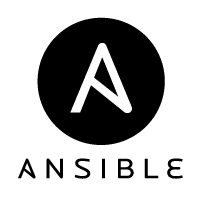Tag: Install
Installing Linux Software Via The Commandline
Installing Linux software from the command line can save you time, money, and make life easy — if you know what you’re doing! This article is a brief overview of how the command line operates on a RedHat or CentOS-based Linux distribution, or even within a server cluster.
Once we have learned how the command line works, we will move on to installing, removing, and updating our software packages via the command line with yum. To get started, let's begin by making sure we understand what the command line does.
The Benefits Of Containerization
Fast, Portable and Secure.
Containerization is a technology that is taking the IT world by storm! It’s no surprise considering the considerable benefits of shifting to a container based deployment.
While managing your server, you’ll sometimes need to check on which software (or packages) you have installed on your system. You’ll need to know package names, version numbers, dates of installation, etc. In this Liquid Web tutorial, we’re going to be discussing how to inspect packages installed on your CentOS system. There are several ways to accomplish this, and we’ll discuss a few of them. Let’s dig in! To use these commands, you’ll need to log in to your server via SSH. For more information, see Logging into Your Server via Secure Shell (SSH).
How to Setup and Use Microsoft SQL Server Management Studio (SSMS)
What is SQL Server Management Studio (SSMS)?
SQL Server Management Studio (SSMS) is a free Windows application to configure, manage, and administer Microsoft SQL Server (MSSQL). SSMS includes an Object Explorer to view and interact with databases and other elements, a Query window to write and execute Transact-SQL queries, and script editors for developers and administrators.
What is Redis?
Redis or “REmote DIctionary Server” is defined as an open source, "key-value" database storage medium, which is additionally known as a data structure server. At its heart, Redis works with key-value pairs and stores data in a location that's easily referenceable by two specific values. These key-value associations are usually a set of two linked data entries which are made up by a key, which is a unique identifier for a type of data and, the value, which can be either the particular data that is identified or, an indicator to the location of that data.
Install and Configure Git on Ubuntu 18.04
What is the purpose of Git?
Git gives you a way to not only track changes in source code, but it can also be used to track changes in files. It then stores the data in what is called a repository, also known as a repo. In short, Git is a tool used as a version control system (VCS), allowing you to distribute changes from your local machine to the repo and vice versa. In this tutorial, we’ll be instructing on how to install and configure git onto an Ubuntu 18.04 server.
Install the LAMP Stack Using Tasksel on Ubuntu 16.04
There are multiple ways of installing software on Debian based systems like Ubuntu and Mint. Tools like apt, apt-get, aptitude and/or synaptic are usually used to install single applications into the desktop editions of those OSes. Alternatively, Tasksel is a command line app for installing a “group” of related packages onto a server. Tasksel is not installed by default on the desktop editions of the ‘nix’ versions that contain the above-mentioned package managers but, it is installed on later versions of Debian and Ubuntu server editions.
VNC (Virtual Network Computing) is a method for sharing a remote desktop environment. Allowing you to remote control another computer or server over the Internet or local network as if you were sitting in front of it. Keyboard and mouse strokes from your computer are relayed to the remote computer/server. There are many different kinds of VNC software available today. Several are cross-platform and add additional features, such as chat or file transfers. VNC is often used for remote technical support and remotely accessing files.
Install PHP on Windows
PHP for Windows provides users the ability to run nearly any PHP script desirable. Windows can tackle a wide range of software, from your PHP scripts to the many content management systems such as WordPress or Drupal.
How to Use Ansible

Ansible is an easy-to-use automation software that can update a server, configure tasks, manage daily server functions and deploys jobs as needed on a schedule of your choosing. It is usually administered from a single location or control server and uses SSH to connect to the remote servers. Because it employs SSH to connect, it is very secure and, there is no software to install on the servers being managed. It can be run from your desktop, laptop or other platforms to assist with automating the tedious tasks which every server owner faces.
Our Sales and Support teams are available 24 hours by phone or e-mail to assist.

